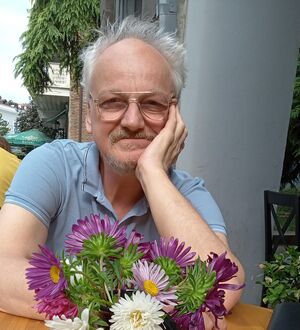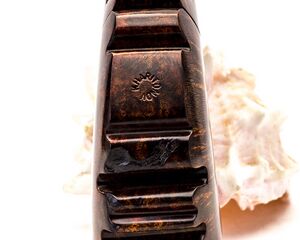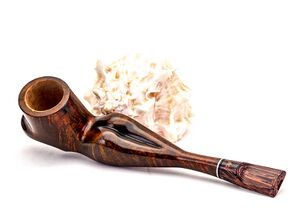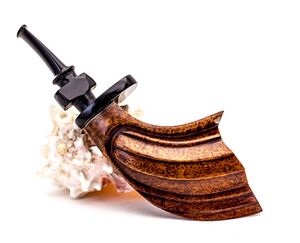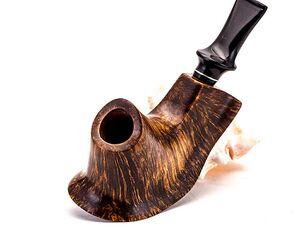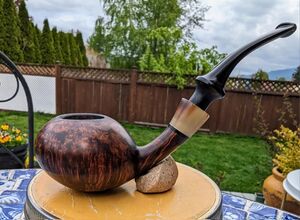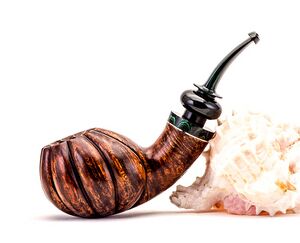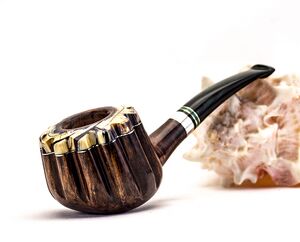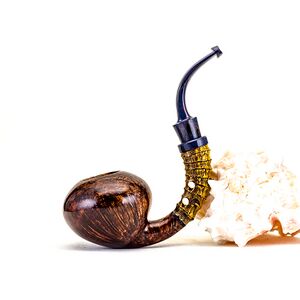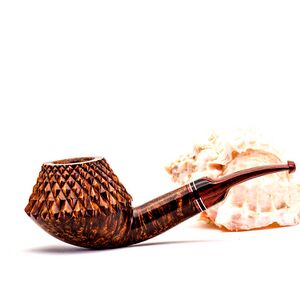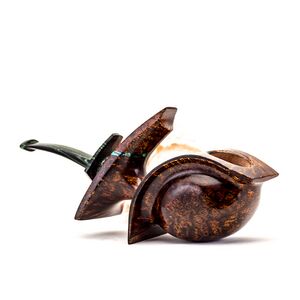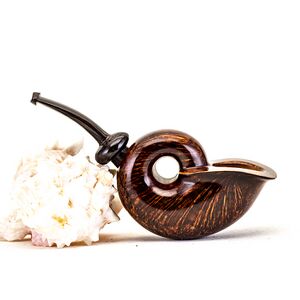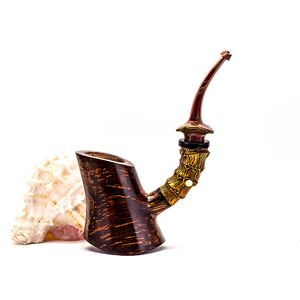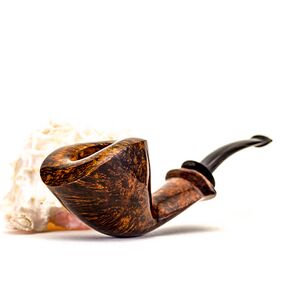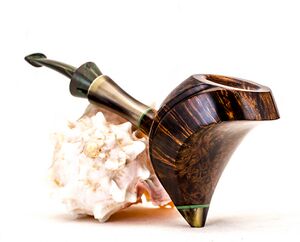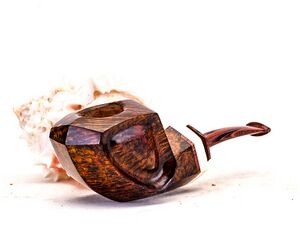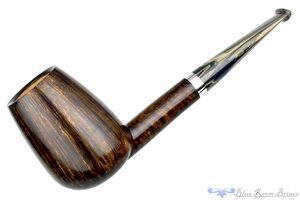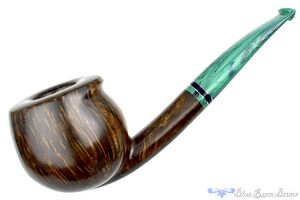Kharitonov
Andrey Kharitonov (Russian: Андрей Харитонов) was born in 1961 in Moscow, Russia, where he still lives today.[1] He was gifted his first pipe on his 20th birthday, which was made from cherry wood by his brother. From then on, he was never without a pipe.
During the many decades that Kharinotov was a pipe smoker, he frequently found himself repairing and restoring pipes. Like many pipe makers, Kharitonov’s introduction to the craft came from making replacement stems, repairing shanks, and refinishing stummels. Following in his brother’s footsteps, Kharitonov also experimented with making his own pipes out of cherry wood.
By chance, in 2019 Kharitonov discovered a Moscow-based store that sold briar from Manno in Italy. He bought his blocks of briar later that year and set about making his first briar pipes.
Despite his years of experience with pipe repair, when Kharitonov first began making briar pipes, he did not possess a workshop to make them in; nor did he have the traditional tools used in the craft. This limited his ability to reproduce standard European pipe shapes. According to Kharitonov,
“My first pipes had nothing to do with classical forms. Classical forms were created for processing on a lathe, but at that time I did not have a lathe. I had practically no tools necessary for making pipes. There were a few files, a couple of narrow wood chisels, and sandpaper bought from a nearby hardware store. There was also no workshop. I would come home from work, sit in the kitchen and start working.”
These constraints on Kharitonov’s pipe making yielded surprising results. His earliest pipes show a markedly experimentalist approach to form, coupled with a clear talent for expressing the various figures hidden within a given briar block. But when Kharitonov shared his pipes on a Russian pipe smokers’ forum, his audience was, according to Kharitonov, not impressed. Here he encountered another problem concerning his pipe making, expressed in the form of a question from another user:
“Who do you make your pipes for? For pipe smokers or pipe collectors? If for smokers, then almost all of your smoking pipes are not suitable, for one simple reason. They are uncomfortable and impossible to hold in your hand. Look at your ‘Mermaid,’ ‘Goby,’ ‘Orange,’ and so on – these pipes do not have a comfortable position in the hand and therefore the average smoker is unlikely to ever buy them. If you make pipes for collectors, then there are no miracles in the world. First you must earn a name for yourself and become a famous master. Only then can you possibly get to selling pipes to collectors. You must decide for yourself what audience you will work for.”
This feedback had Kharitonov rethink his approach to pipe design, though it did not completely discourage him from continuing to explore unique and elaborate forms. The pipes Kharitonov made in response to the challenge posed by his new audience were more conservative in their designs, with greater emphasis placed on function. But 'conservative' pipe design in the 21st century is not at all like the conservatism of early- to mid- 20th European shape charts. Kharitonov's pipes were, instead, more in keeping with the formal conventions of post-Danish artisan pipe making, as most prominently seen today in the United States and Japan.
Soon, Kharitonov’s pipes began to find a market. By the end of 2020, he had made 50 pipes, using the proceeds from their sales to purchase dedicated pipe making equipment. During 2021, he made 110 pipes, and had started receiving enough commission requests to quit his job and become a full-time pipe maker. He has continued to make pipes as a full-time job ever since, and has sold his pipes through vendors such as Blue Room Briars, Cup O' Joes, and Watch City Cigar. Having found a market and acquired something of a cult following on pipe forums, Kharitonov has in more recent years enjoyed a greater freedom in the designs that he chooses to pursue. As a result, many contemporary Kharitonov pipes recall the inventive, leftfield stylings of his earliest forays into the craft. Despite this, Kharitonov says that he is still in search of a style of his own. He does, however, claim that he has been strongly inspired by the work of other Russian pipe makers, such as Victor Yashtylov, Misha Revyagin, and Alexey Kharmalov – pipe makers who Kharitonov feels an affinity with because they all “think in the same language.”
Kharitonov typically makes his stummels from Calabrian briar and his stems from SEM ebonite. To accent his pipes, he sometimes uses inserts made of silver, cupronickel, or exotic woods, but his favorite adornment is fossilized mammoth tusk, which he uses frequently. He is also especially fond of working with bamboo, which he incorporates into many of his designs, often in ways that introduce dramatic curves not afforded by briar or ebonite.
One of the most distinctive aspects of Kharinotov's current work is his use of texture. In contrast to traditional ways of incorporating texture into a pipe, such as rustication or sandblasting, Kharitonov's pipes often feature striking, tactile patterns carved into the briar, while still retaining a smooth finish. As for the finish itself, Kharitonov pipes can often be identified by their idiosyncratic contrast staining, which favors hues of walnut, copper, and plum.
In addition to his online presence on Facebook and Instagram, Kharitonov is a regular poster on forums such as Pipe Smokers' Den, where he can be found presenting his latest creations and discussing the design and production processes behind his work.
Gallery
Contact Information:
Facebook: https://www.facebook.com/pipemakerarts/ Instagram: https://instagram.com/kharitonov0407
References
- ↑ Information for this article was supplied by Kharitonov via email interview.
